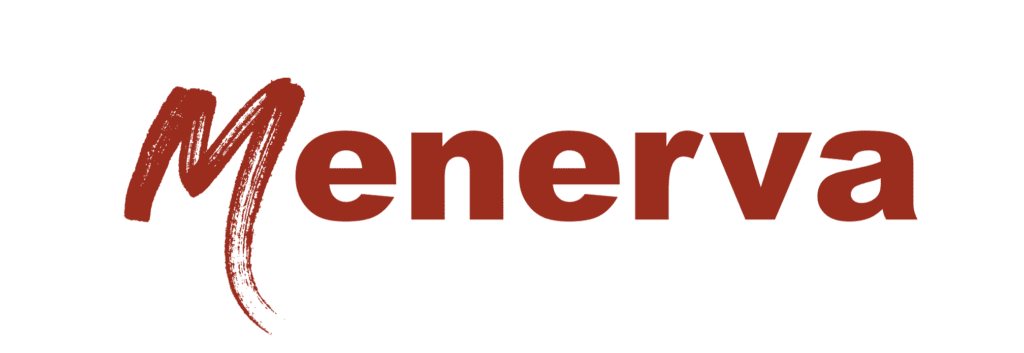Artificial intelligence isn’t a sidekick anymore; it’s front and center in modern marketing. From campaign testing to targeting and real-time personalization, AI is baked into how marketing teams operate every single day. What’s different in 2025 is the urgency. AI isn’t in the testing phase anymore; it’s a core part of the marketing stack.
That’s good news and a wake-up call. Brands that embrace AI now will move faster, make sharper decisions, and create more personalized, human experiences. Those who hesitate? They risk getting left behind.
Whether you’re a solo business owner trying to scale smart, a digital marketer managing multi-channel campaigns, or an SEO strategist staying ahead of search shifts, these trends matter.
Here’s a look at the biggest AI marketing trends to watch, and how to act on them.
1. Personalization Gets a Serious Upgrade
For years, personalization meant plugging a first name into an email or sending an abandoned cart reminder. But now, AI is enabling real-time, behavior-based personalization across your website, emails, and product recommendations.
Platforms like Dynamic Yield and Adobe Target analyze what users click, where they linger, and what they ignore. The result? Experiences that shift on the fly. A customer checking out winter gear might see cold-weather items front and center on their next visit. Someone browsing sneakers? They’ll get an entirely different homepage.
What used to take days of testing and custom dev work is now automatic. AI handles the technical lift, letting your team focus on big-picture strategy and storytelling.
Prompt to try:
“Generate five personalized homepage variations based on user browsing behavior using AI-driven insights.”
2. AI Content Creation Is Growing Up
In 2020, AI content tools were novelty add-ons. Fast-forward to 2025, and they’re now core collaborators. Brands are using AI to generate drafts, pull research, spin up visuals, and even build product demo videos.
But let’s be clear: the best teams aren’t outsourcing creativity. They’re speeding up early-stage work like outlining, scripting, and drafting, so humans can spend more time refining the message.
Here’s how top marketers are blending the two:
- Writers use AI to draft articles, but still finesse the tone and structure.
- Designers prompt image generators, then art-direct the final product.
- Strategists use AI to discover trends and generate audience insights before crafting messaging.
Done right, it means faster launch cycles and stronger creative.
Prompt to try:
“Write a blog post introduction on the future of ethical AI in marketing using a friendly, expert tone.”
3. Predictive Analytics Goes Mainstream
AI is no longer just helping teams create, it’s helping them predict.
Predictive analytics is taking center stage in 2025, using past behavior and campaign data to forecast what audiences will do next. Instead of reacting to performance dips, marketers can anticipate them. That includes:
- Spotting likely drop-off points in a funnel
- Identifying which leads are close to converting
- Forecasting campaign ROI before launch
While platforms like Meta and Google already use predictive models, brands are now integrating this thinking into email marketing, web personalization, and retention workflows.
Why it matters: Predictive insights help teams spend smarter and act faster.
4. Paid Media Becomes Smarter, But Harder to Control
AI already drives much of today’s paid media; think auto-bidding, ad copy generation, and dynamic audience selection. Tools like Google Performance Max and Meta Advantage+ automate most campaign logistics.
That’s great for efficiency. But it also comes with trade-offs.
As AI systems take more control, visibility into why certain ads perform better disappears. You’re not just outsourcing labor, you’re outsourcing decisions.
If you’re a paid media manager or digital strategist, staying in control means:
- Layering in independent analytics tools
- Running creative A/B tests outside platform recommendations
- Documenting what AI changes and when
Prompt to try:
“List three ways to maintain campaign transparency when using AI-powered ad platforms.”
5. Cookieless Targeting with AI-Powered Segmentation
As third-party cookies vanish and privacy laws tighten, brands are pivoting to first-party data; think email subscribers, CRM info, and on-site behavior.
But raw data isn’t enough. AI helps turn those signals into action. Tools like Klaviyo and Segment allow you to group users into dynamic segments that update in real time. That means your messaging adjusts as behavior changes, without invading privacy.
If you’re a small business owner or email marketer, this opens the door to:
- Identifying micro-segments based on purchase intent
- Predicting churn before it happens
- Tailoring content based on contextual, not just historical, behavior
And all of this happens without relying on invasive tracking scripts.
6. Ethical AI and Transparency Are Non-Negotiable
With AI running the show, questions about ethics and data privacy are growing louder.
Customers want to know: How is my data used? Is AI writing that email? What’s automated vs. human-led?
Whether you’re a founder building trust with first-time buyers or a brand manager overseeing sensitive messaging, being proactive here matters.
Brands that lead with transparency, disclosing when and how AI is used will build more trust. That includes:
- Explaining where automation plays a role in messaging
- Auditing for bias in content and targeting
- Ensuring human review in every campaign
In a crowded market, ethical AI practices may become a competitive edge.
Prompt to try:
“Create a short customer-facing AI disclosure message that explains how AI powers personalization.”
7. The Marketer’s Role Is Evolving
AI isn’t replacing marketers. But it is reshaping what they do.
In 2025, marketers are wearing new hats:
- Strategists are becoming data translators
- Writers are turning into editors and voice protectors
- Media buyers are guiding AI models, not just setting budgets
If you’re working in-house, freelancing, or scaling your own brand—expect more hybrid roles that blend creativity with data.
The most significant skill shift? Knowing how to work with AI. That means understanding prompt engineering, data inputs, and when to intervene.
And as AI takes over the busywork, the human edge—judgment, empathy, creativity—becomes even more valuable.
8. AI and the Future of SEO
AI isn’t just changing how we create and distribute content, it’s fundamentally shifting how search engines work, and that has major implications for SEO professionals.
In 2025, search is more conversational, visual, and predictive. With the rise of AI Overviews in Google and multimodal search experiences, traditional keyword targeting isn’t enough. SEOs now need to optimize for intent, structure, and context.
If you’re in SEO, here’s what that means:
- Prioritize entity-based optimization over exact match keywords
- Use structured data to help AI understand relationships between content elements
- Optimize for LLMs and answer engines, not just blue links
AI tools can also support SEO strategy:
- Predict which pages are likely to drop in rankings
- Cluster topics based on emerging queries
- Generate schema markup, internal link suggestions, and FAQ sections
And as search evolves, so does your content strategy. Think less about ranking for one query, and more about covering an ecosystem of related topics in a human-friendly way.
Prompt to try:
“List five long-tail keywords related to AI marketing that are optimized for conversational search.”
Final Thoughts: Be Human, Move Fast
AI is now the norm in marketing, not the exception. It’s accelerating everything from asset creation to customer targeting. But it works best when paired with human insight.
Whether you’re a solo marketer, part of an in-house team, or leading an agency, this shift affects you.
The brands that win in 2025 won’t be the ones that automate everything. They’ll be the ones that know when to lean on AI—and when to lean on people.
Need help integrating AI into your marketing mix? Get in touch with our team. Let’s build something more innovative together.
FAQs
Will AI replace marketing jobs?
Not exactly. It’s changing roles, not removing them. Expect to see more hybrid roles, such as AI content strategist or data-informed creative lead.
How can small businesses start using AI in marketing?
Start with tools that are already AI-powered: email platforms, ad managers, and CRMs. Focus on one area (like personalization or content drafts), then expand.
Is AI marketing expensive?
Not necessarily. Many AI tools are baked into platforms you’re already using. The investment is more about training your team to use them well.





